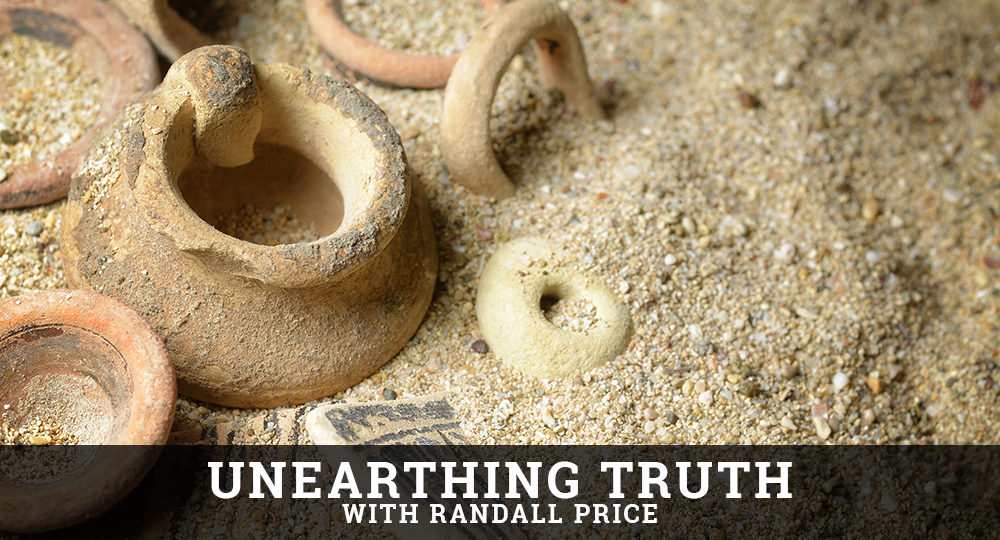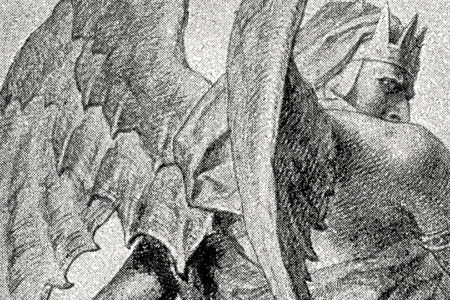The Fall: Mythology or History?
The book of Genesis records the fall of man—the event where humanity rebelled against God and thus exchanged an innocent nature for a sinful nature, immortality for mortality. Archaeology reveals that an Ancient Near Eastern (ANE) myth shares a similar story. Skeptics claim the similarities nullify the historicity of the biblical account, but the ANE literature actually strengthens the case for the biblical, historical fall of man.
According to Scripture, God created Adam (Hebrew for “man”) and Eve, granted them immortality, and commanded them to eat of every tree in the Garden of Eden except one. Satan (in the form of a serpent) deceived Eve to violate God’s command and to eat from the forbidden tree. Thus Adam and Eve disobeyed God and forfeited immortal life (Gen. 3:1–19).
In the Babylonian story of Adapa (c. 1300 BC), the god Ea created Adapa, whose name means “man.” Ea granted Adapa wisdom (not immortality).1 One day, after Adapa committed a violation against the sky-god Anu, Anu called Adapa to appear before him. Ea counseled Adapa to show reverence to Anu’s gatekeepers, but not to eat or drink anything Anu offered him.
Adapa so pleased Anu’s gatekeepers that Anu decided not to punish Adapa but, rather, to reward him with the gift of immortality. To receive the gift, Adapa had to eat the “bread of life” and drink the “water of life.” But because of Ea’s deception, Adapa refused the gifts; and Anu sent him back to Earth saying, “he had rejected immortality and brought ill upon mankind.”2
Although this myth parallels the biblical account in its explanation of why man suffers death, the differences demonstrate that the biblical authors could not have recast their accounts from the myth. Yet the similarities argue for a common historical event.
Like Adam, Adapa was understood to be the first man and divine representative of the creator. Just as Adam was to care for the Garden, so Adapa was to care for Ea’s sanctuary. Just as God placed a “tree of life” in the Garden, so Anu offered Adapa the “bread of life” to gain immortality. Just as the serpent deceived Adam and Eve to disobey God, Ea deceived Adapa into rejecting Anu’s offer. Both were then exiled to experience death as mortals.
The striking similarities reveal that the historical event of the fall of man was passed down after the Noahic Flood (chaps. 6—9) and remained in the common culture. Years later, after the dispersion at Babel (11:1–9), different cultures adapted the event to fit local mythologies. So, contrary to the claims of skeptics, the Babylonian Adapa myth actually reinforces the truth of the historical, biblical account of the fall of man.
There are also stark differences between the accounts that betray any claim the biblical authors might have borrowed from mythology. For example, in the Adapa story, Adapa’s creator god Ea is deceitful and evil, lying to Adapa to keep him from obtaining immortality. The Creator God of Scripture loved Adam, granted him immortality, and desired for him to keep it and live an abundant life.
Both Jesus and the apostle Paul affirmed the Genesis account of the Fall as a literal, historical event. Paul said, “Therefore, just as through one man sin entered the world, and death through sin, and thus death spread to all men, because all sinned” (Rom. 5:12; cf. Mt. 19:4; Mk. 10:6; Jn. 8:44; 2 Cor. 11:3; 1 Tim. 2:13). Praise God our hope of salvation rests on a firm foundation and on a God who loves us.
Endnotes
- K. Van der Toorn, Bob Becking, Pieter Willem van der Horst, Dictionary of Deities and Demons in the Bible (Grand Rapids, MI: Eerdmans, 1999), 73–74.
- Stephanie Dalley, “Myths from Mesopotamia: Creation, the Flood, Gilgamesh, and Others,” Oxford World’s Classics (Oxford: Oxford University Press, 2008), 182.








